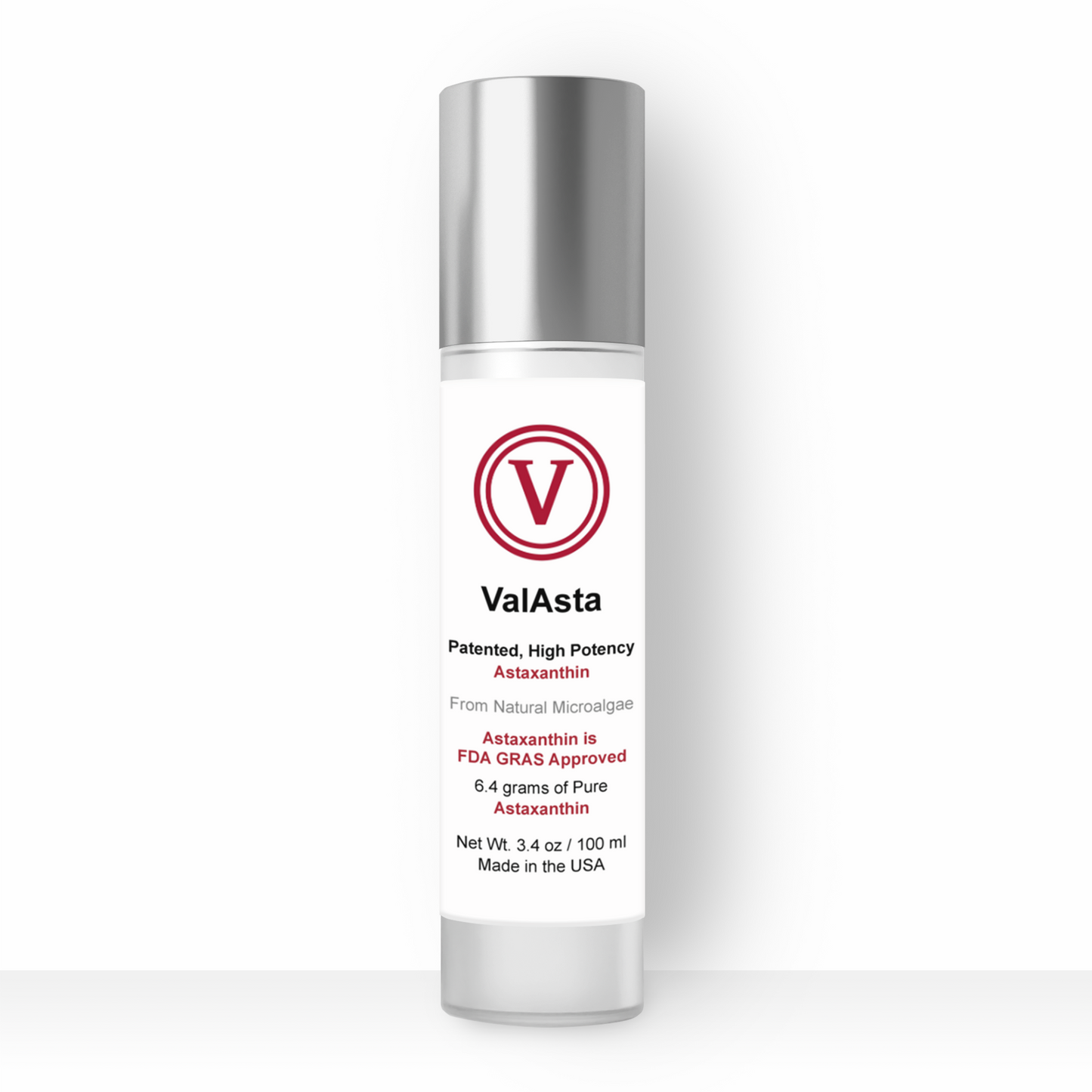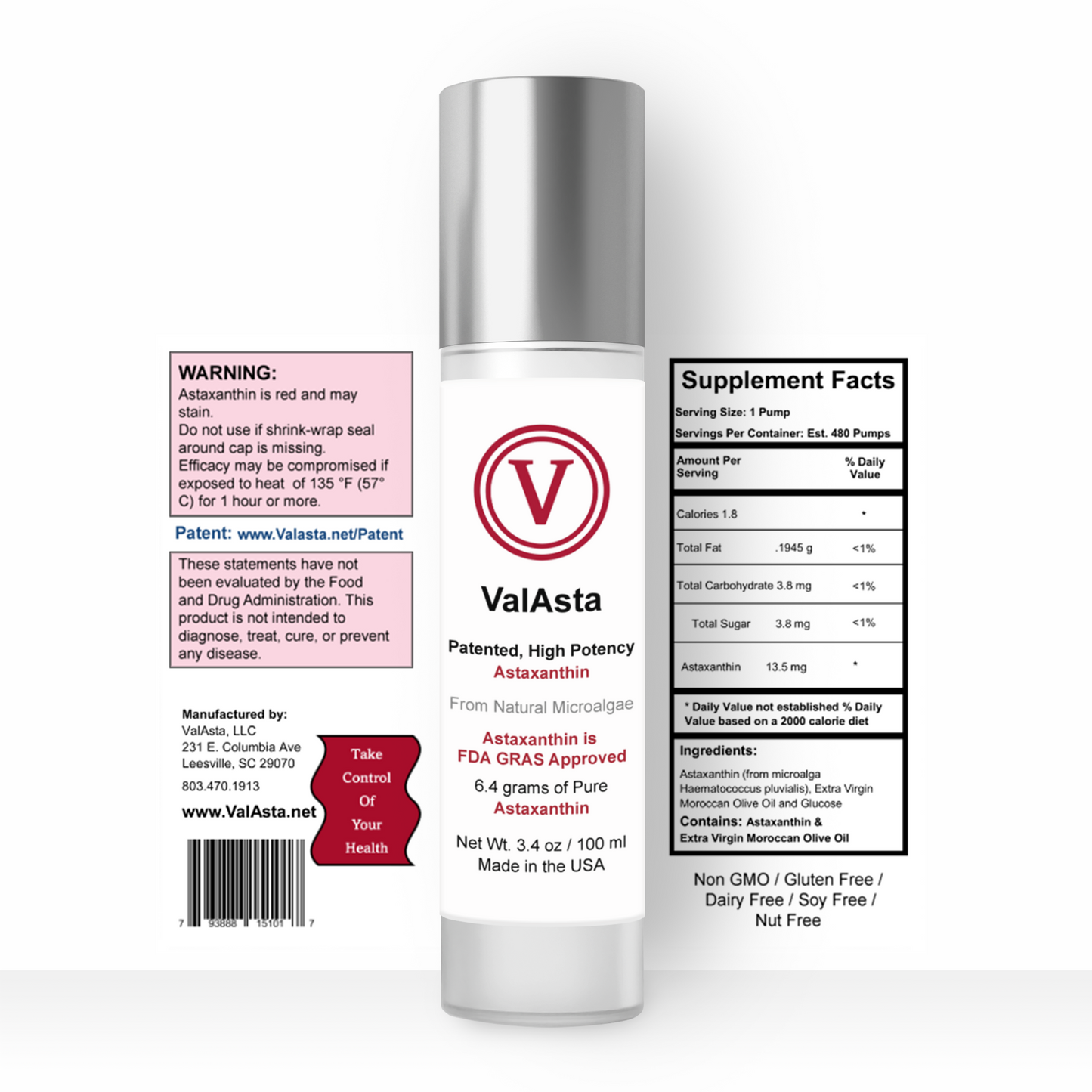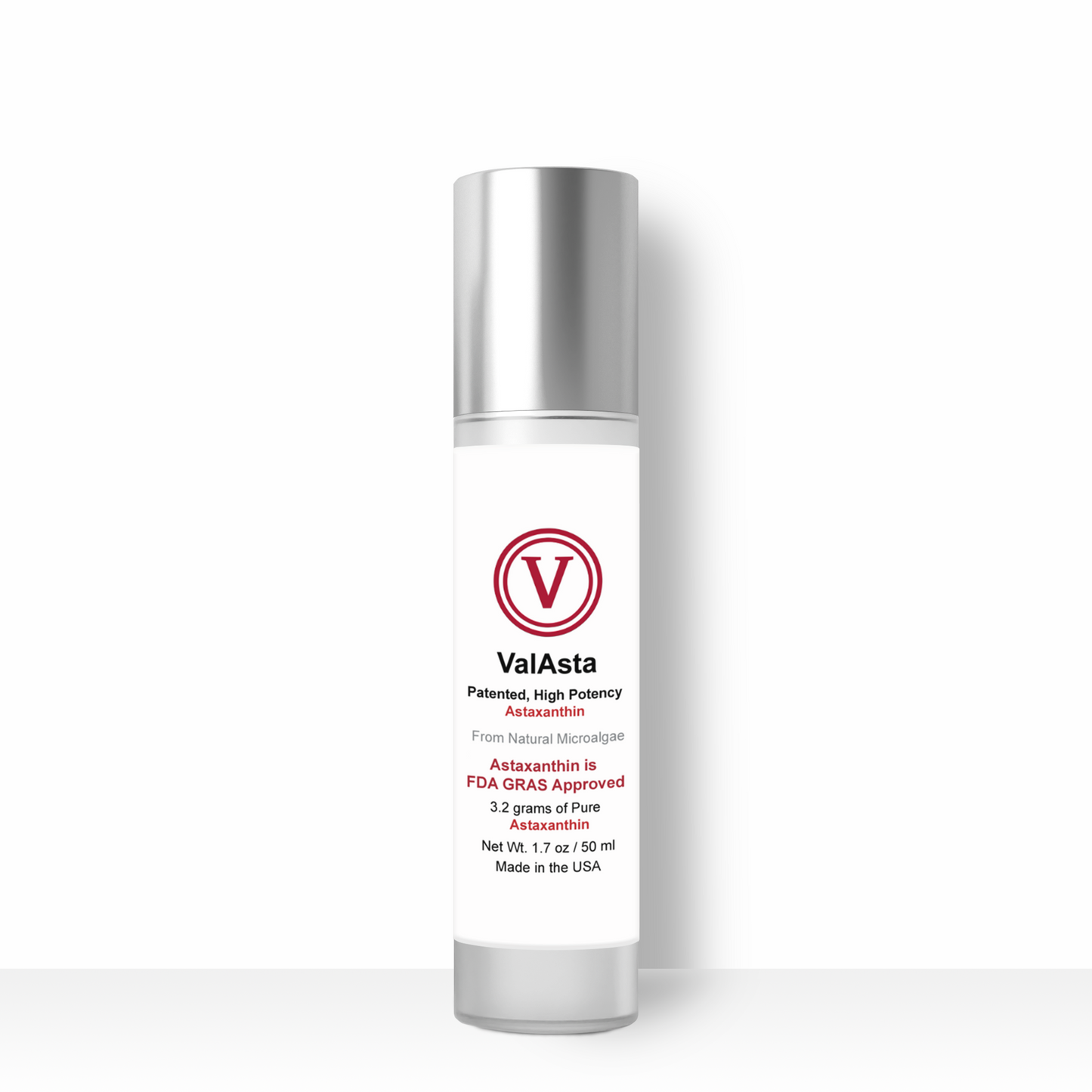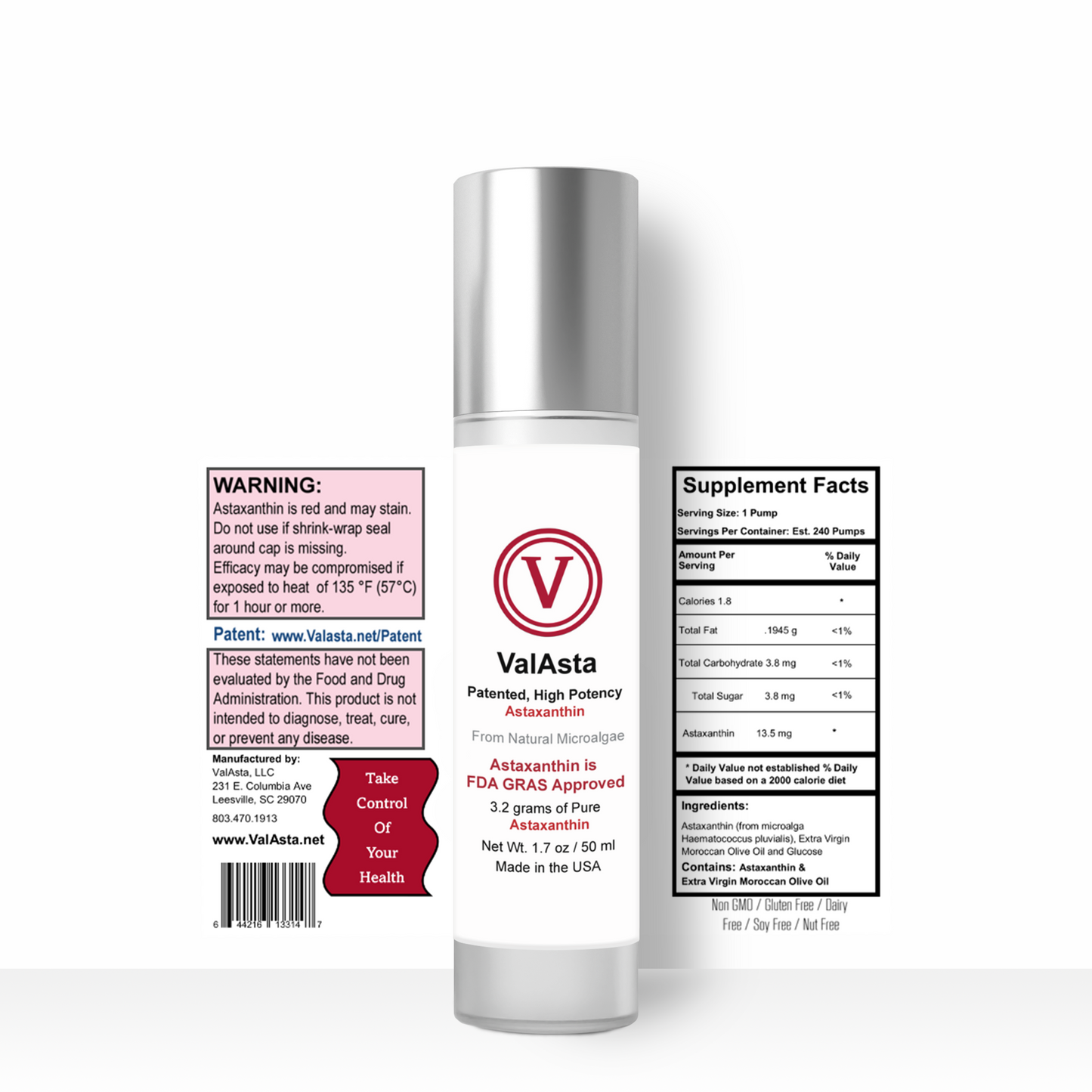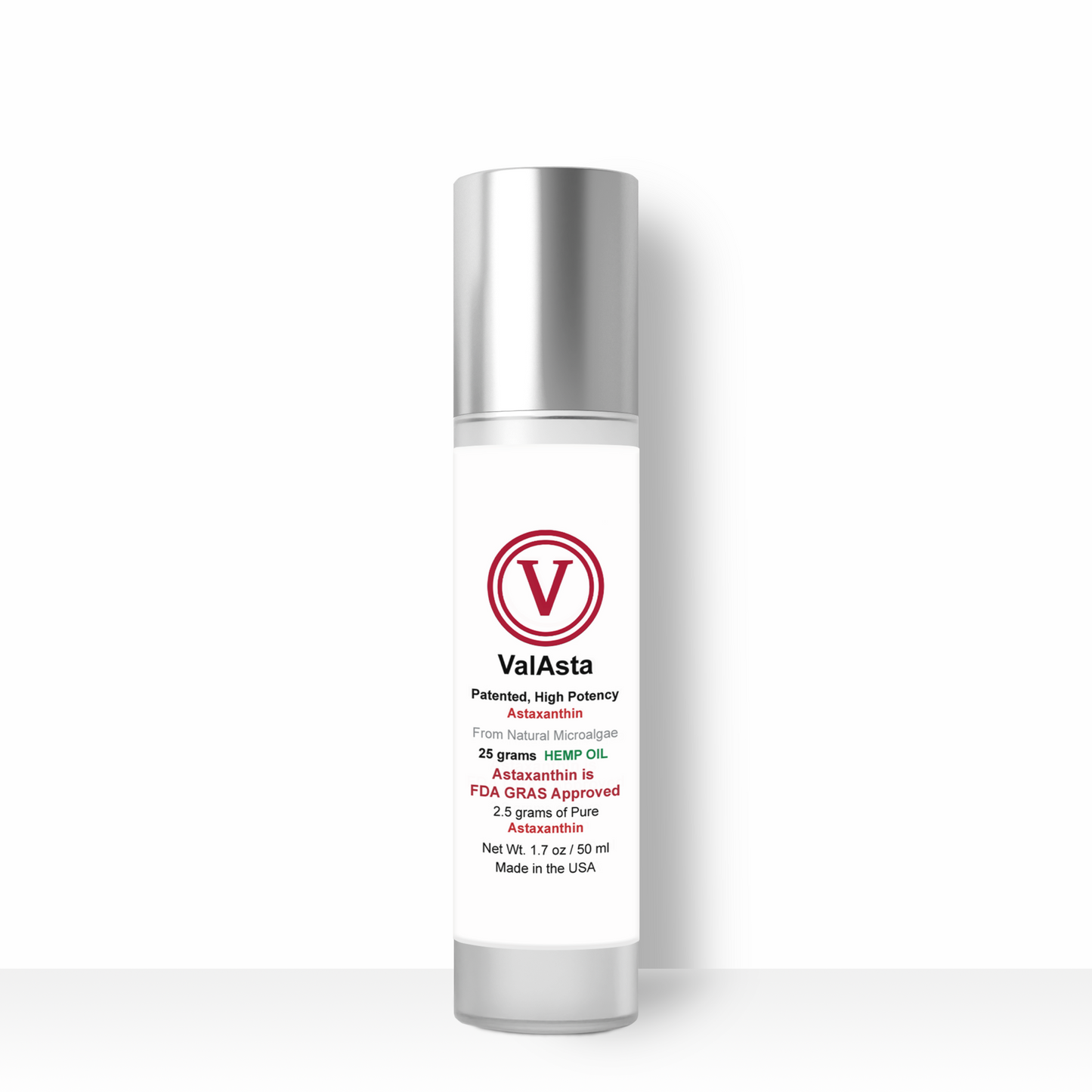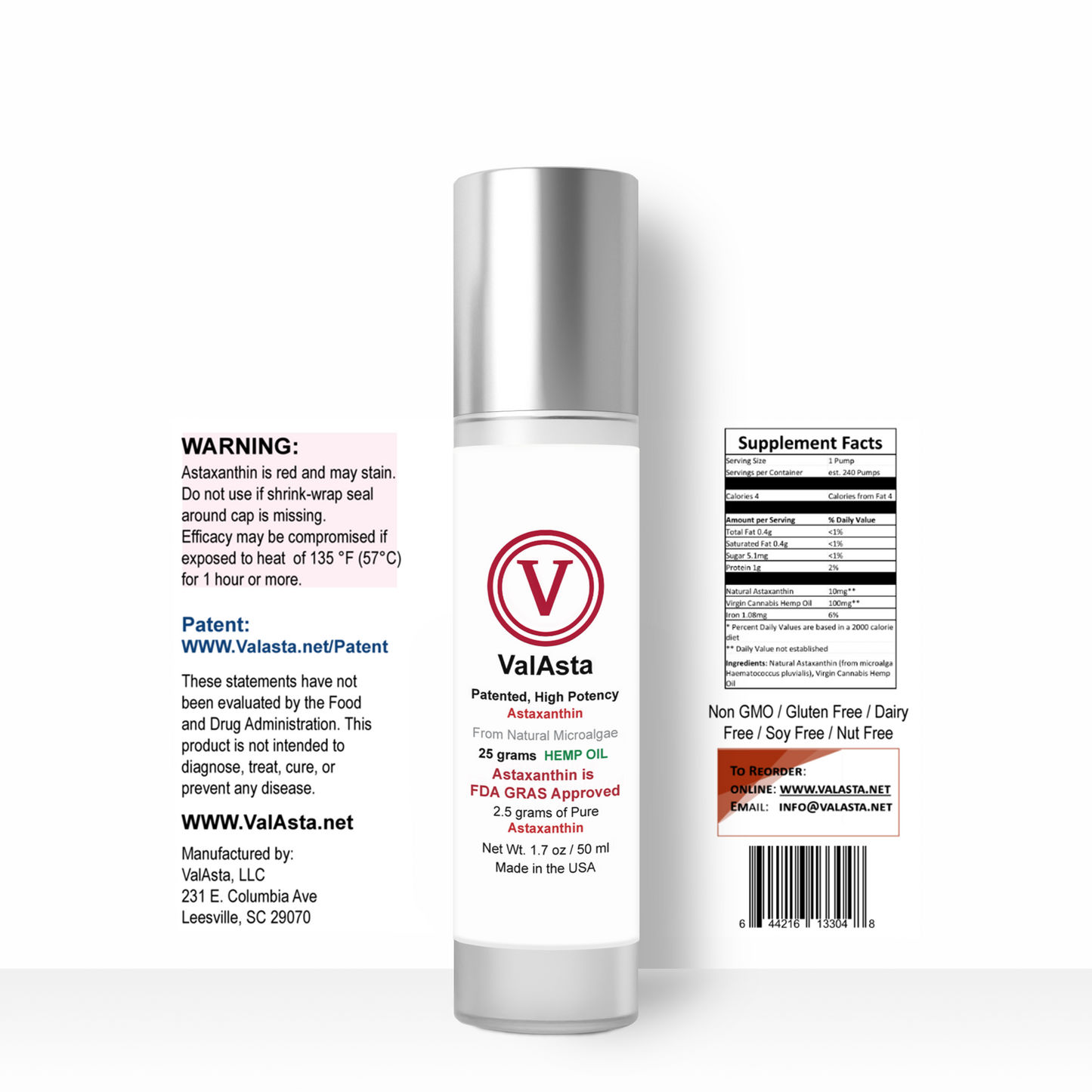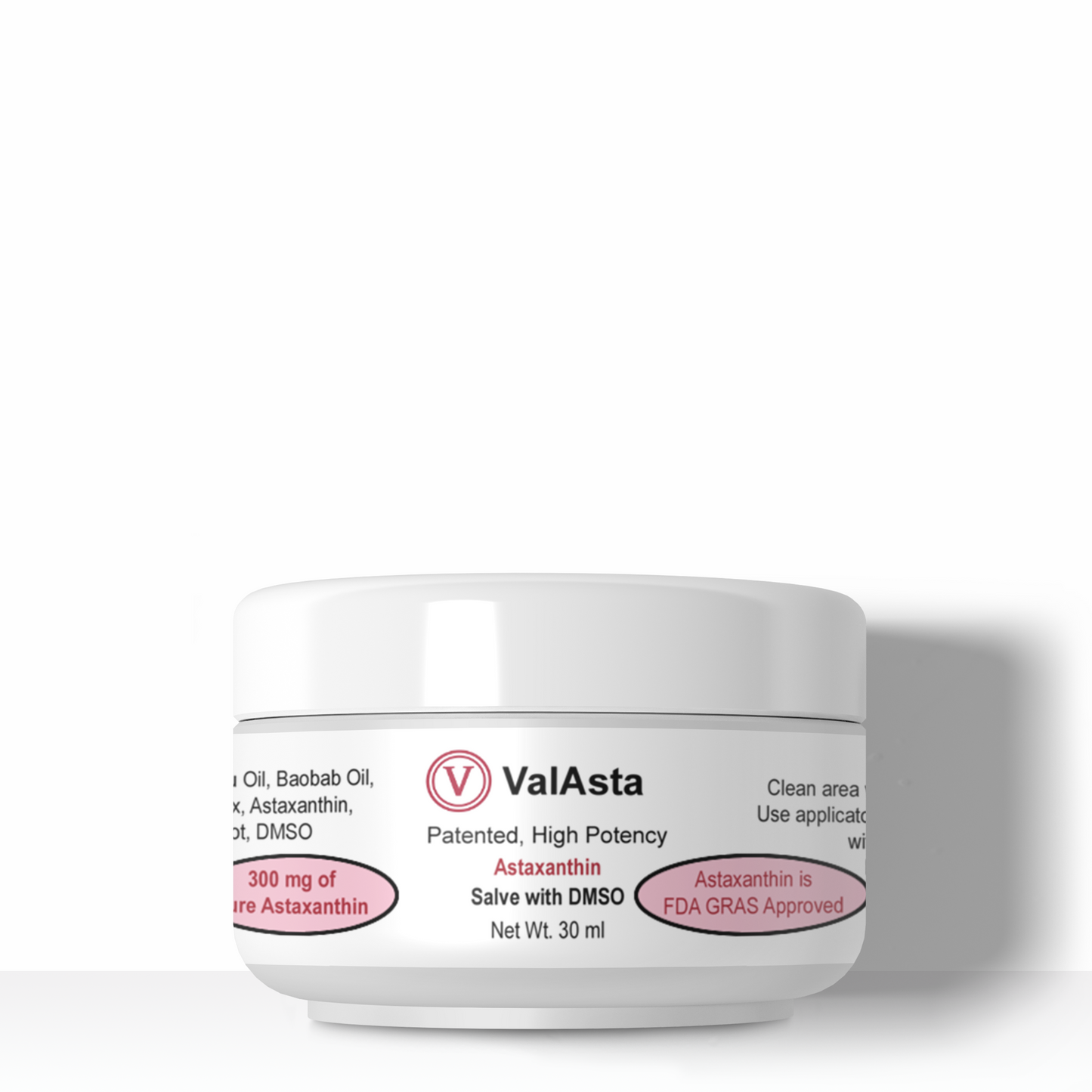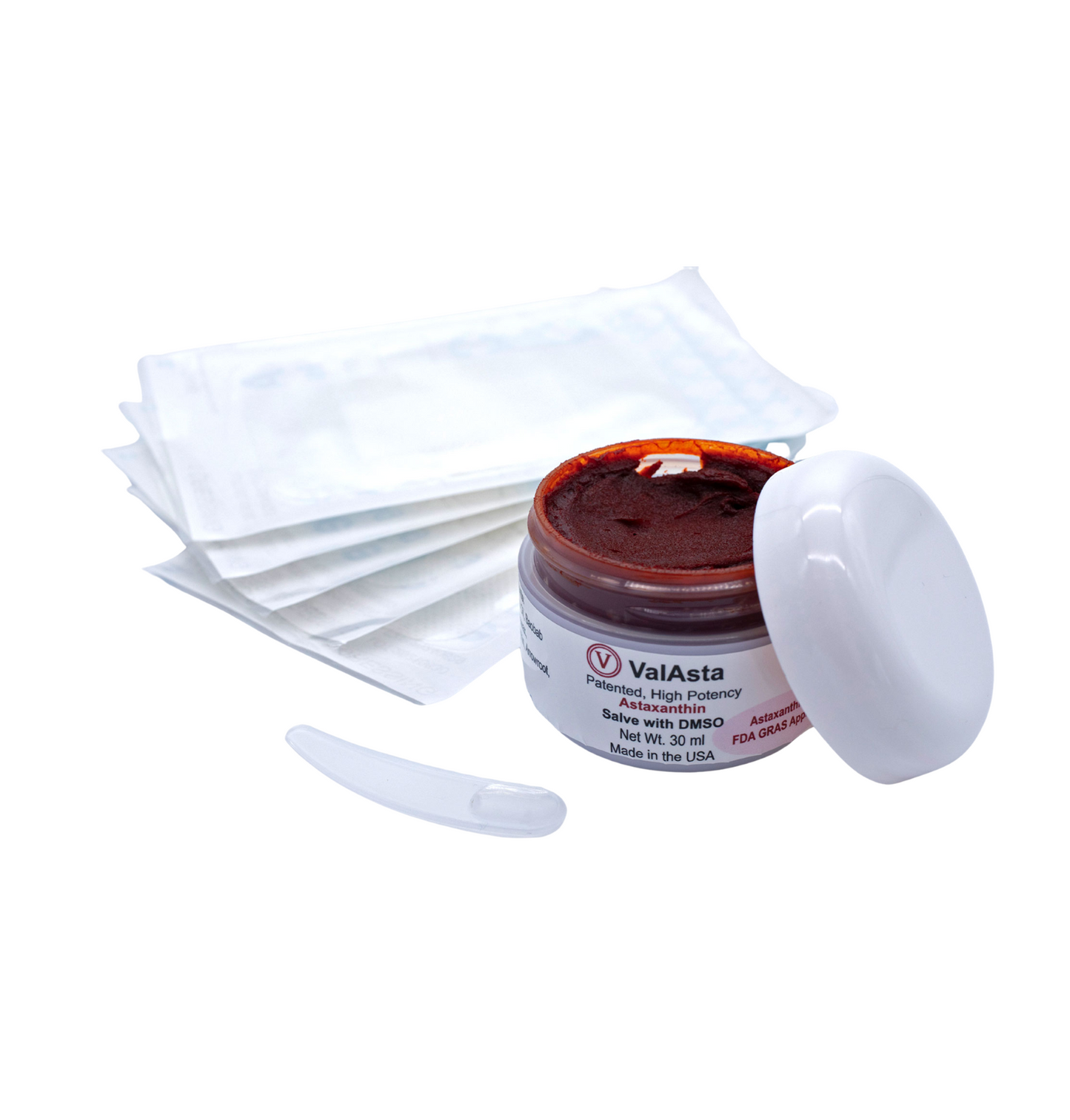Pancreatic | Liver | Gallbladder Cancer

ValAsta is the only patented supplement that will reduce ROS causing the DNA damage causing cancer.
The Patented ValAsta is a mixture of Glucosidic Astaxanthin and Olive Oil using a proprietary method to create a Liposomal delivery. This Patented process of encapsulating the astaxanthin molecule inside a fat molecule took ValAsta 8 years to develop. We use high frequency energy to do this, which makes the astaxanthin molecule far more absorbable inside the body.
Pancreatic Cancer
The pancreas is an organ of the endocrine and digestive systems. The endocrine portion contains islet cells that produce the hormones insulin and glucagon, which regulate the amount of sugar in the blood. The exocrine portion of the pancreas makes and secretes enzymes into the duodenum that help digest protein, starches, and fat.
About 30,000 new cases of pancreatic cancer are diagnosed in the United States each year. Because the early symptoms are vague, and there are no screening tests to detect it, early diagnosis is difficult.
Factors that cause ROS and increase the risk of Pancreatic cancer include:
- Chronic pancreatitis
- Incidence is higher in lower socioeconomic groups.
- Incidence is higher in urban populations.
- Age: people between 60 and 80 years of age.
- Gender: men (slightly more common than in women).
- Race: African Americans (slightly more common than in Caucasians).
- Lifestyle: smoking and alcoholism.
- Industrial chemicals: workers exposed to solvents and petroleum compounds.
- Family history: people with a history of pancreatic cancer in a close family member.
Gemcitabine chemotherapy is commonly used to treat Pancreatic cancer; however, pancreatic cancer becomes resistant to it. Recent study suggested that co-treatment with ValAsta and gemcitabine may be a therapeutic strategy for gemcitabine-resistant pancreatic cancer.
Another study shows astaxanthin, a naturally occurring potent antioxidant, significantly reduces oxidative stress and protects from pancreatic damage in Acute pancreatitis (AP). The antioxidant effect of not only related to its scavenging activity but also could be owing to its increasing effect on antioxidant defense enzyme expression. Thus, astaxanthin can be used as a valuable therapeutic approach in Acute pancreatitis (AP).
Liver Cancer
The liver is one of the largest organs of the body and serves the vital function of filtering all the circulating blood. Cancer cells adrift in the bloodstream are likely to end up in one of the liver's thousands of blood-straining lobules, making this organ one of the most frequent sites of metastatic cancer.
Cancer that originates in the liver is called hepatoma and is primary liver cancer. Liver cancer happens when liver cells develop changes (mutations) in their DNA caused by free radical damage or ROS (reactive oxygen species).
Primary liver cancer is rare in the United States, accounting for less than 2 percent of all cancers; but it occurs much more frequently in some parts of Asia.
Primary cancer of the liver most often occurs in a person whose liver is damaged and "cirrhotic" because of chronic infection, particularly chronic hepatitis B and hepatitis C infections; alcoholism; or, rarely, exposure to cancer-producing substances.
ValAsta’s antioxidant effects are protective of the liver, and research reveals it guards against fatty liver changes and protects against damage due to alcohol and other toxins, and liver fibrosis.
This 2020 research reveals that Astaxanthin can prevent and treat liver diseases by inhibiting inflammation and improving glycolipid metabolism.
Astaxanthin in Liver Health and Disease: A Potential Therapeutic Agent - PMC (nih.gov)
Factors that cause ROS and increase the risk of liver cancer include:
- Chronic infection with hepatitis B virus (HBV) or hepatitis C virus (HCV).
- Cirrhosis. This condition causes scar tissue to form in your liver and increases your chances of developing liver cancer.
- Certain inherited liver diseases. Liver diseases that can increase the risk of liver cancer include hemochromatosis and Wilson's disease. The studies found that oxygen stress or excess intracellular reactive oxygen species (ROS) generation plays a vital role in the pathophysiological processes of iron overload-induced cellular and tissue damage resulting in severe liver damage. ValAsta neutralizes ROS. https://www.ncbi.nlm.nih.gov/pmc/articles/PMC6875360/
- Diabetes. People with this blood sugar disorder have a greater risk of liver cancer than those who don't have diabetes.
- Nonalcoholic fatty liver disease. An accumulation of fat in the liver increases the risk of liver cancer. Study shows, astaxanthin prevents fatty liver disease https://www.ncbi.nlm.nih.gov/pmc/articles/PMC6164583/
- Excessive alcohol consumption. Consuming more than a moderate amount of alcohol daily over many years can lead to irreversible liver damage and increase your risk of liver cancer. NIH study reveals astaxanthin exerted rapid and direct effects against repeated alcohol-induced liver disease and could boost recovery from liver injuries caused by long-term alcohol intake. https://www.ncbi.nlm.nih.gov/pmc/articles/PMC7293384/
Most people don't have signs and symptoms in the early stages of primary liver cancer. When signs and symptoms do appear, they may include:
- Losing weight without trying
- Loss of appetite
- Upper abdominal pain
- Nausea and vomiting
- General weakness and fatigue
- Abdominal swelling
- Yellow discoloration of your skin and the whites of your eyes (jaundice)
- White, chalky stools
Many NIH and other scientific journals have noted the valuable properties of astaxanthin in liver health. https://www.ncbi.nlm.nih.gov/pmc/articles/PMC7293384/
Evidence continues to mount showing that Astaxanthin is one of the most potent antioxidants yet discovered. ValAsta is 8 times more absorbent than any other brand.
A study conducted by researchers from India's National Institute of Pharmaceutical Education and Research found that astaxanthin not only can reduce oxidation of the liver but can actually prevent DNA damage and the early stages of liver cancer development.
In the study, researchers induced oxidative stress in the livers of rats. This stress has been shown to lead to DNA damage and, eventually, to the development of liver cancer. The researchers then treated the subjects with 25 mg/kg astaxanthin. They found that oxidative stress (ROS), DNA damage and precancerous symptoms were all reduced.
"The study confirms that astaxanthin is a potent antioxidant and attenuates oxidative stress, DNA damage, cell death as well as induction of early hepatocarcinogenesis," the researchers wrote.
Gallbladder and Bile Duct Cancers
Gallbladder and bile duct cancers are rare, and together make up only 2 to 3 percent of all cancers. It is almost always adenocarcinoma, which is a type of cancer that starts in glandular cells in the lining of your organs.
Gallbladder cancers account for two-thirds of these cancers; bile duct cancers are responsible for the rest. An early diagnosis, which is rare, is usually made when the organ is removed because of gallstones.
When gallstones block the passageway — called bile ducts — out of the gallbladder or in your liver, your gallbladder becomes inflamed. This is called cholecystitis, and it can be an acute or long-term, chronic problem.
Chronic inflammation from cholecystitis is the biggest risk factor for gallbladder cancer. According to the American Society of Clinical Oncology (ASCO), gallstones are found in 75 to 90 percent of people with gallbladder cancer.
The cause of bile duct cancer is unknown, but exposure to environmental or industrial toxins and infection by certain parasites have been associated with the disease.
Factors that cause increase the risk of gall bladder cancer include:
- Age: people are 60 to 70.
- Gender: more common in men.
- People with a history of gallstones.
- Chronic liver disease
ValAsta has helped with many other common inflammatory conditions:
Is Astaxanthin Safe?
The safety of astaxanthin administered orally was assessed in a medical trial undertaken in healthy adults. Volunteers were administered astaxanthin or placebo for eight-weeks. The authors concluded that healthy adults could safely consume natural astaxanthin.
In another study, high concentrations of astaxanthin were tested with blood taken from volunteers, 8 of whom were taking aspirin and 12 who were not. Even medical grade concentrations of astaxanthin had no adverse effects.
No significant side effects have been reported so far in published human studies in which astaxanthin was administered to humans.
Are There Any Side Effects?
- Astaxanthin has been classified as a generally safe supplement in the USA.
- ValAsta is 100% natural and has no serious side effects.
- The only side effects we have observed are a slightly reddish stool and in rare cases some stomach discomfort.
Benefits of ValAsta
- The only Patented astaxanthin for treatment of diseases.
- The world’s strongest natural anti-inflammatory.
- The world’s strongest natural antioxidant.
- 6000 x stronger than vitamin C
- Used to reduce chronic inflammation.
- Used as an anti-ageing supplement.
- Used as a health & fitness supplement.
- Protects health at a cellular level.
- Neutralized free radicals or ROS.





















